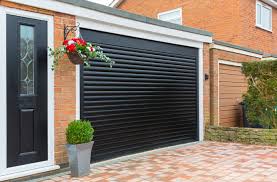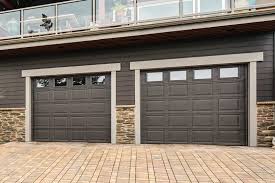There can be several reasons why your Garage Door Repair light is blinking and won’t close. In this response, I will explore some possible causes and troubleshooting steps you can take to resolve the issue.

Please note that this is a general guide and specific instructions may vary depending on the make and model of your garage door opener. It’s always recommended to consult the manufacturer’s manual or contact a professional if you are unsure or uncomfortable performing these tasks.
- Obstruction Detection: Modern garage door openers are equipped with sensors that detect objects in the door’s path. If the sensors detect an obstruction, the door will not close and the light might blink. Inspect the area around the door and make sure there are no objects blocking the sensors. Additionally, check if the sensors are properly aligned. They should have a clear line of sight with no obstructions.
- Power Interruption: A power interruption can cause the garage door opener to malfunction. Check if the opener is receiving power by ensuring it is plugged in securely. If it is, check the circuit breaker or fuse that controls the garage door opener to see if it has tripped or blown. If necessary, reset the breaker or replace the fuse.
- Sensor Malfunction: If the sensors are clean, aligned, and unobstructed but the problem persists, they may be malfunctioning. Inspect the sensors for any visible damage or loose wiring. If you notice any issues, contact a professional to repair or replace the sensors.
- Remote Control Issues: Sometimes, problems with the remote control can prevent the garage door from closing properly. Check if the batteries in the remote are working and properly inserted. If the remote has a programming feature, try reprogramming it according to the manufacturer’s instructions. You can also try using a different remote control if available to determine if the issue lies with the remote itself.
- Opener Limits: Garage door openers have adjustable travel and force limits to ensure safe and proper operation. If these limits are not set correctly, it can cause the door to stop and the light to blink. Consult your garage door opener’s manual for instructions on adjusting the travel and force limits. Make small adjustments and test the door’s operation after each change until the issue is resolved.
- Manual Lock: Some garage doors have a manual lock feature that prevents the door from opening or closing automatically. If your door has a manual lock, ensure that it is disengaged or unlocked. Attempting to close the door while the lock is engaged can cause the light to blink and the door to stop.
- Motor or Gear Issues: If none of the above steps resolve the issue, there may be a problem with the garage door opener’s motor or gears. Over time, the motor or gears can wear out or become damaged, causing the door to stop and the light to blink. In such cases, it is advisable to contact a professional garage door technician to diagnose and repair the problem.
Remember, Garage Door Repair can be heavy and potentially dangerous if not handled properly. If you are unsure about any of the troubleshooting steps or feel uncomfortable performing them, it is best to seek professional assistance to avoid accidents and further damage to the door or opener.
Team Taylor Doors
210 SW Market St Suite 144, Lee’s Summit, MO 64063
1-816-408-6999






